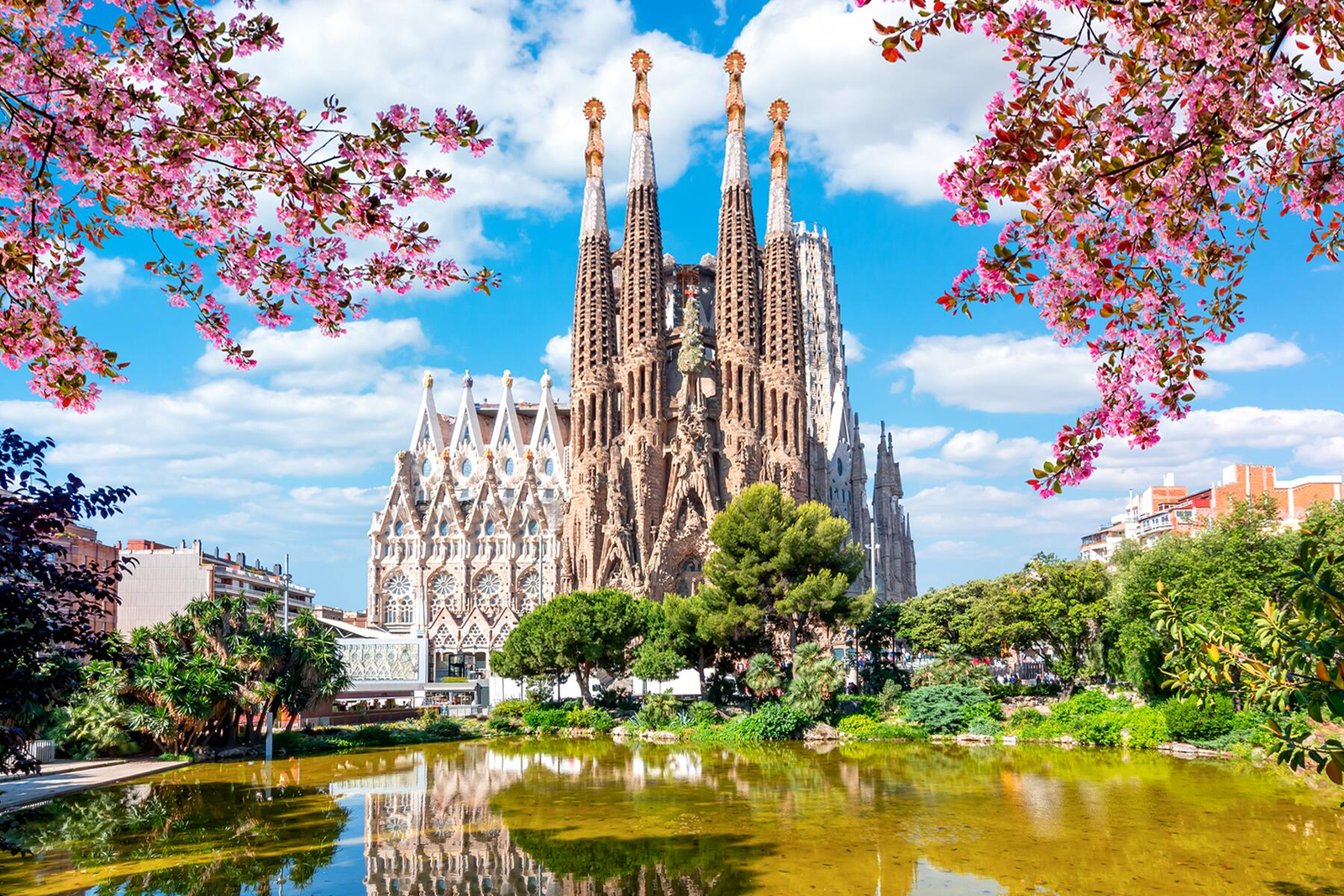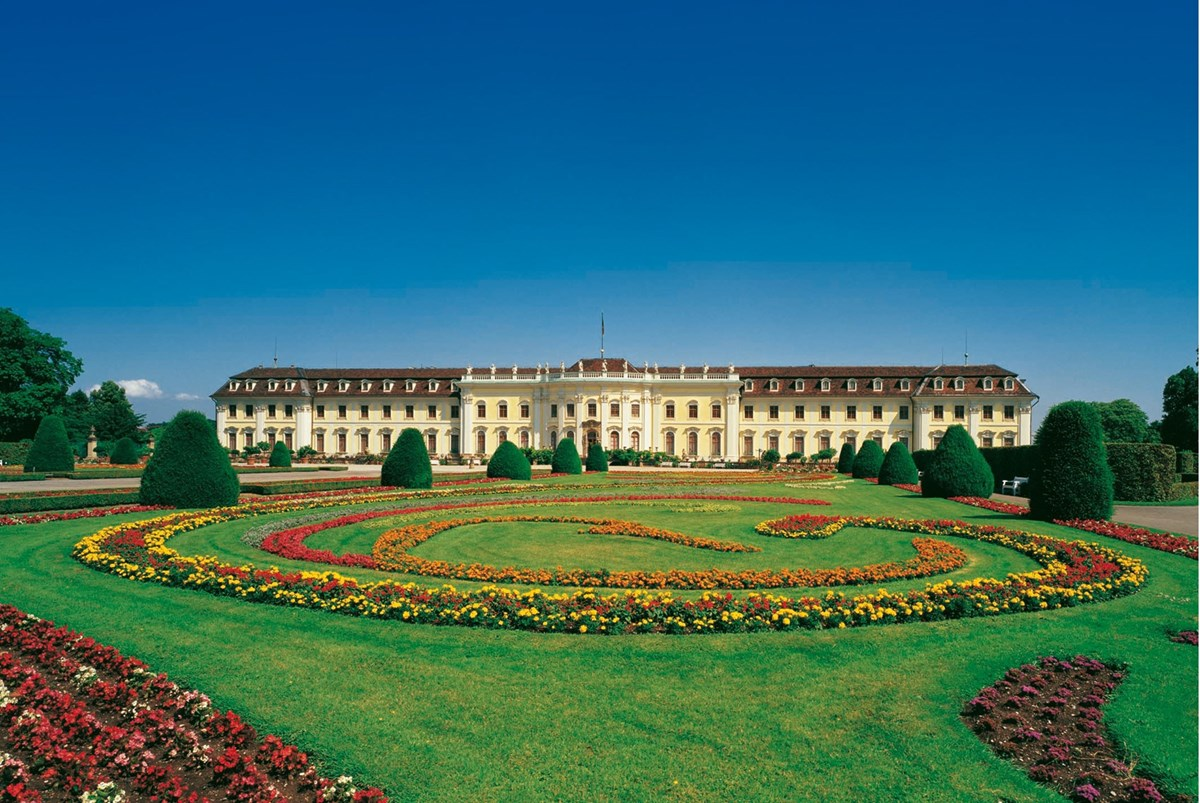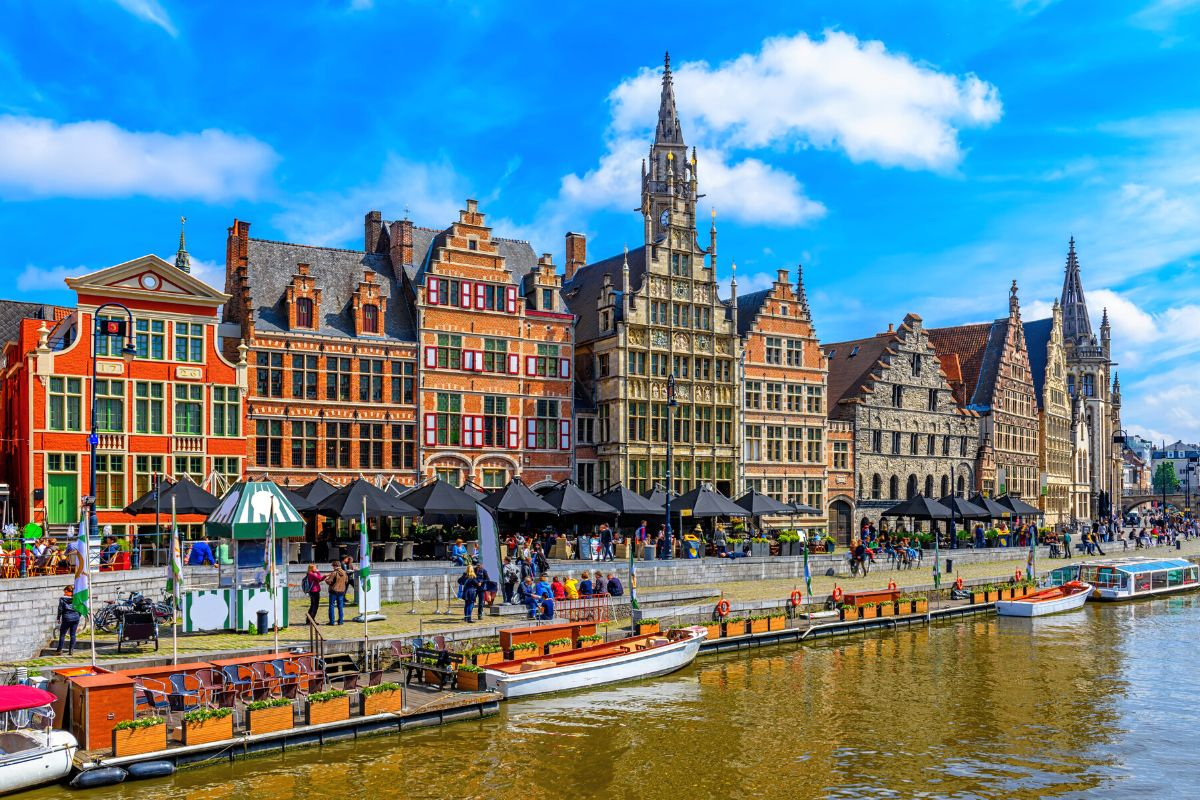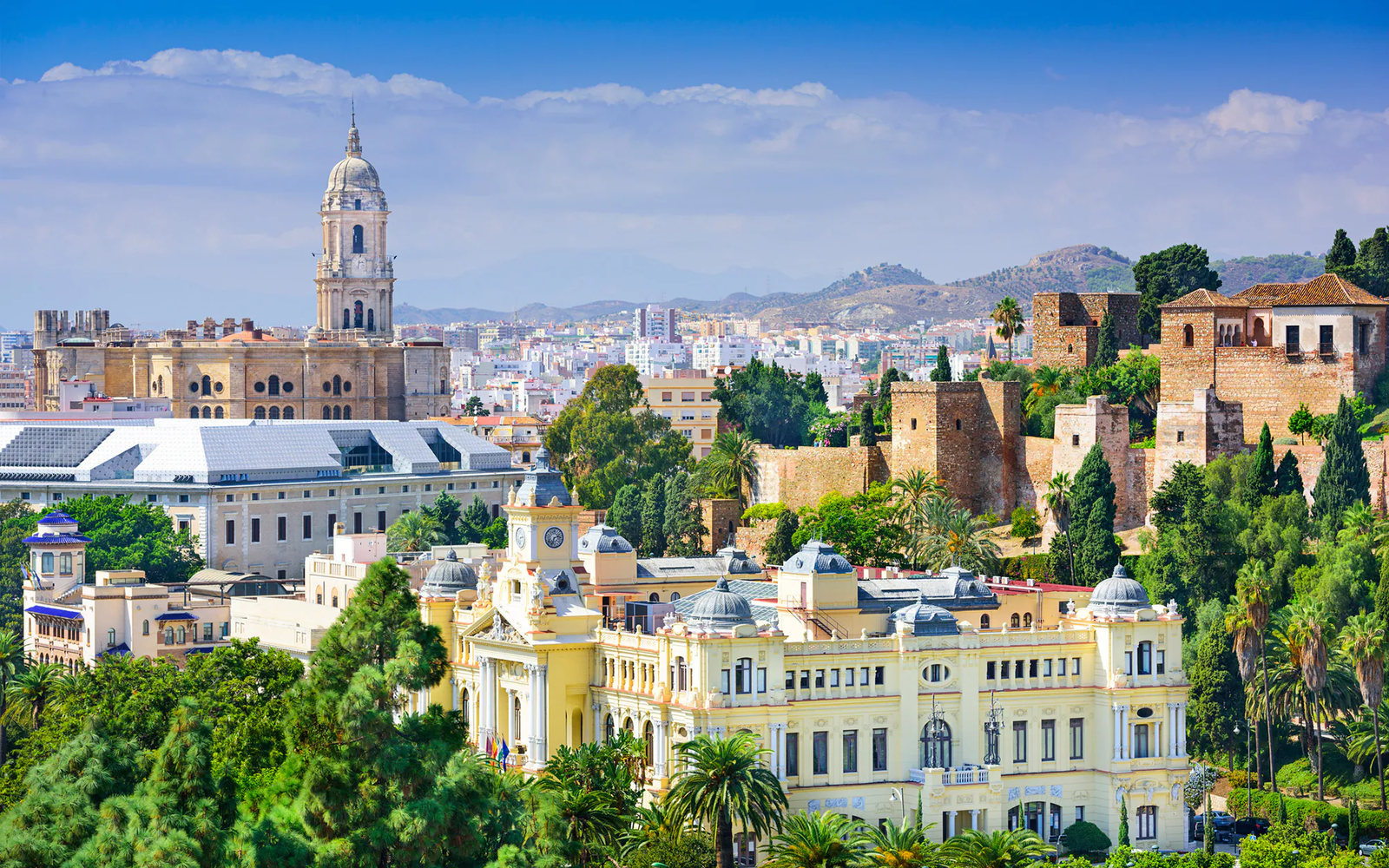Barcelona dazzles visitors with its sunny Mediterranean setting, whimsical modernist architecture, mouthwatering tapas, and lively culture. Located on Spain’s northeastern coast along the azure waters of the Mediterranean Sea, Barcelona embodies everything vibrant, artistic, and cosmopolitan about Catalonia.
| No. | Activity | Description |
|---|---|---|
| 1 | La Sagrada Familia | Visit Gaudí’s unfinished masterpiece. |
| 2 | Las Ramblas | Explore the vibrant boulevard. |
| 3 | Park Güell | Enjoy Gaudí’s park with city views. |
| 4 | Gothic Quarter | Wander through historic streets. |
| 5 | MNAC | Admire art at the national museum. |
| 6 | Barceloneta Beach | Relax at the city beach. |
| 7 | Casa Mila | Explore Gaudí’s innovative architecture. |
| 8 | El Born | Experience a trendy neighborhood. |
| 9 | Museu Picasso | View Picasso’s artworks. |
| 10 | Flamenco Show | Attend a traditional dance performance. |
| 11 | Parc de la Ciutadella | Stroll in a large urban park. |
| 12 | Seafood at the Port | Enjoy local seafood. |
| 13 | Montjuïc Hill | Get panoramic views. |
| 14 | Shopping on Portal de l’Angel | Indulge in retail therapy. |
Whether it’s your first visit or a return trip, Barcelona always rewards travelers with an abundance of things to see, do, eat and experience. As you plan your 2024 travels, here are 15 of the top attractions and activities to enjoy in spectacular Barcelona.
Marvel at La Sagrada Familia

Name and Location: La Sagrada Familia, Barcelona, Spain
History and Significance: La Sagrada Familia is an unfinished Roman Catholic basilica in Barcelona designed by Spanish architect Antoni Gaudí. Construction began in 1882 and is still ongoing today. It is considered Gaudí’s masterpiece and one of the most famous architectural landmarks in Barcelona and Spain.
What to Expect: Visitors can tour the Nativity Facade, Passion Facade, interior nave, crypt, and museum. Highlights include the towering spires, intricate stone carvings, stained glass windows, and beautiful architecture.
Visitor Information: Admission tickets should be purchased in advance online. Guided tours and audio guides are available. The basilica is open daily 9am-6pm, with extended hours in summer. Metro lines 2 and 5 stop nearby.
No first-time visit to Barcelona is complete without entering Antoni Gaudi’s mind-blowing masterpiece, the still unfinished La Sagrada Familia basilica. Gaudi devoted over 40 years of his life to this fantastical neo-Gothic church, which remains under construction over 130 years after it began. The sheer verticality, symbolic religious details, and organic architectural forms will leave you in awe. Don’t miss the Passion Facade’s anguished faces, Nativity Facade’s life and joy, and the peaceful interior bathed in rainbow light from stained glass windows. Climbing the towers provides an even more transcendent perspective high above Barcelona.
Wander Along Las Ramblas Boulevard

Name and Location: Las Ramblas, Barcelona, Spain
History and Significance: Las Ramblas is a famous pedestrian street and popular tourist destination in central Barcelona. It connects Plaça de Catalunya with the Christopher Columbus Monument by the port.
What to Expect: Visitors can stroll down the tree-lined promenade past vendors, shops, restaurants, and street performers. Key sights include La Boqueria Market, Gran Teatre del Liceu, and Font de Canaletes.
Visitor Information: Las Ramblas gets very crowded, especially during the day. Beware of pickpockets. It’s best explored in the early morning or evening. The nearest metro stops are Catalunya and Liceu.
The central pedestrianized thoroughfare of Las Ramblas leads right through the heart of Barcelona’s historic Gothic Quarter district. Take your time strolling down this tree-lined lane past graceful buildings, lively squares, street performers, vendors, and droves of pedestrians. Have your portrait sketched, check out the unique living statues, and browse the sidewalk kiosks. Stop for a breather along with some tapas and cava at one of the bustling cafés lining the route. Las Ramblas perfectly encapsulates Barcelona’s vibrant energy and charm.
See Gaudi’s City of Towers at Park Güell

Name and Location: Park Güell, Barcelona, Spain
History and Significance: Park Güell is a public park system containing gardens, architecture, and mosaic artwork designed by Antoni Gaudí. It was originally planned as a housing development but became a municipal garden.
What to Expect: Visitors can explore the two entrance buildings, long bench with mosaic snake, iconic dragon staircase, colonnaded hall, and panoramic plaza overlooking the city.
Visitor Information: Purchase advance tickets online to avoid long lines. The Monumental Zone has limited daily entries. Wear comfortable shoes to walk the park trails and steps. Take the Metro to Vallcarca or bus 24.
Another of Antonio Gaudi’s UNESCO-honored masterpieces, Park Güell contains whimsical buildings, mosaic designs, and avant-garde architectural details across a hillside park originally intended as a housing development. The standout is the main terrace with its stunning sea serpent bench encircling a colorful tiled salamander fountain. This space appears like something from a fantasy novel with quirky curved columns, stone trees, porticos, and mosaics adorning the colonnades. Throughout the park, Gaudi’s use of vivid tile, stained glass, iron, and stonework demonstrates his artistic genius and vision.
Explore Barcelona Gothic Quarter

Name and Location: Gothic Quarter (Barri Gòtic), Barcelona, Spain
History and Significance: The Gothic Quarter is the historic and atmospheric medieval center of Barcelona located in Ciutat Vella. Many buildings date back to medieval times when Barcelona thrived as a major port city.
What to Expect: Narrow cobblestone lanes open onto historic plazas and landmarks like the Barcelona Cathedral, Plaça del Rei, and remnants of the Roman wall. Great for wandering, shopping, and dining.
Visitor Information: Avoid the areas near the Barcelona Cathedral at night. Explore in the morning/afternoon when more shops and restaurants are open. The closest metro stops are Jaume I and Liceu.
For a taste of Barcelona’s medieval origins, get lost wandering the atmospheric lanes of the Barri Gòtic (Gothic Quarter). This historic neighborhood contains Roman ruins, narrow cobblestone alleys, courtyard plazas, and Spanish Baroque and neo-classical buildings housing shops, bars, and cafés. The magnificent Gothic Cathedral, ancient synagogues, and Roman towers like the Temple of Augustus reveal over 2000 years of history. Watching street performers in lively Plaça Reial while nursing a rich cup of Spanish chocolate captures the timeless magic of the Gothic Quarter.
See Masterpieces at Museu Nacional d’Art de Catalunya

Name and Location: Museu Nacional d’Art de Catalunya, Barcelona, Spain
History and Significance: This is the national art museum of Catalonia housed in the Palau Nacional on Montjuïc hill. The collection spans from Romanesque to modern art with highlights including Romanesque wall paintings and Gothic altarpieces.
What to Expect: Visitors can admire the impressive architecture and expansive views from the palace terrace. Don’t miss the medieval Romanesque art section and paintings by Catalan artists. Allow 2-3 hours to tour the highlights.
Visitor Information: The museum is easily accessible by bus, funicular, or on foot from the city center. Purchase tickets online in advance to avoid queues. Open Tuesday-Saturday 10am-6pm, Sundays 10am-3pm.
Barcelona overflows with incredible art and architecture, including one of Europe’s finest collections of Romanesque and Gothic art housed inside the MNAC museum. Located within the majestic 1929 Palau Nacional palace, MNAC contains around 25,000 priceless works spanning a millennium. Marvel at Renaissance masterpieces, old altarpieces, Catalan Modernista paintings, drawings by Picasso, photography exhibits, and much more. Don’t miss the impressive hall of ornately carved Romanesque Madonnas and fascinating collection of murals salvaged from ancient Catalan churches in the valleys.
Walk Along the Promenade at Barceloneta Beach

Name and Location: Barceloneta Beach, Barcelona, Spain
History and Significance: Barceloneta Beach is Barcelona’s most popular urban beach situated along the waterfront in the lively Barceloneta neighborhood. The 1.1km promenade stretches from the Port Olímpic to the W Hotel.
What to Expect: Visitors can sunbathe, swim, stroll along the boardwalk, enjoy seaside restaurants/bars, and watch street performers. The beach gets very crowded in summer.
Visitor Information: The closest metro stops are Barceloneta or Ciutadella-Vila Olímpica. Check beach conditions before swimming. Showers, restrooms, and umbrellas/loungers are available to rent.
After discovering Barcelona’s history, make your way to the trendy Barceloneta neighborhood to stroll the lively promenade overlooking the Mediterranean Sea. This former fishermen’s quarter offers prime beach access with soft golden sand, swaying palms, seaside cafes, and a festive boardwalk bustling with activity. Watch athletes playing volleyball on the beach, grab Mediterranean tapas for lunch, or find a perfect spot to relax on the sand and soak up the rays. The Barceloneta provides an easy urban escape to sunshine, sea breezes, and beautiful views.
Take in Gaudi’s Casa Mila (La Pedrera) on Passeig de Gràcia

Name and Location: Casa Milà (La Pedrera), Barcelona, Spain
History and Significance: Casa Milà, known as La Pedrera, is a modernist building designed by Antoni Gaudí on Passeig de Gràcia. Built 1905-1910, it features a wavy stone facade and an interesting roof with chimney sculptures.
What to Expect: Visitors can tour the furnished apartments, courtyards, fascinating attic, and rooftop with amazing views over Barcelona. Allow 1-2 hours to see it all. The audio guide provides a detailed background.
Visitor Information: Purchase tickets in advance online for day/time entry. Open daily March-October 9am-8:30pm, November-February 9am-6:30pm. Located on the Passeig de Gràcia at the intersection with Provença.
The “Stone Quarry” apartment building of Casa Mila is another of Gaudi’s fantastical modernist structures found along the elegant Passeig de Gràcia boulevard. Built for the Mila family, the undulating façade, wrought-iron details, and chimneys resemble underwater coral more than a conventional building. Inside, the split-level apartments and rooftop terrace offer insight into Gaudi’s revolutionary approaches to space, light, and form. Passeig de Gràcia itself also dazzles with upscale boutiques and magnificent architecture, including Gaudi contemporary Josep Puig i Cadafalch’s Casa Amatller house.
Feast on Tapas and Drinks in El Born Neighborhood

Name and Location: El Born, Barcelona, Spain
History and Significance: El Born is a trendy neighborhood in Barcelona’s Gothic Quarter known for its food scene, nightlife, shops, and culture. It contains many beautiful medieval buildings and sights.
What to Expect: Visitors can browse boutiques, check out the unique architecture, relax in cafés, and sample tapas and drinks at the many bars and restaurants. The Picasso Museum is also located here.
Visitor Information: El Born is very walkable. Explore during the day and evening. The closest metro stops are Barceloneta or Jaume I.
For the ultimate Barcelona foodie experience, make your way to the hip El Born district for an evening hopping between tapas bars and tasting local specialties. Try classic tapas like patatas bravas, jamon Iberico, fried calamari, stuffed peppers, and pimientos de Padron alongside Spanish wines or beers. Top Barcelona picks include busy hole-in-the-wall joints like Xampanyet and Saüc, which get crowded with locals and serve excellent small plates. Wandering El Born’s cobblestone lanes from bar to bar makes for a quintessential Barcelona night out.
View Picasso Masterpieces at Museu Picasso

Name and Location: Museu Picasso, Barcelona, Spain
History and Significance: The Picasso Museum in Barcelona houses one of the most extensive collections of Pablo Picasso’s early work. Picasso spent his formative years in Barcelona.
What to Expect: Visitors can view over 4,000 works from Picasso’s life in Barcelona and his early artistic periods like Blue Period. Temporary exhibitions are also held.
Visitor Information: Advance timed tickets are recommended. Audio guides are available. Open daily 9am-7pm. Located in El Born neighborhood, closest metro is Jaume I.
Pablo Picasso spent his formative early adult years in Barcelona, leaving an indelible mark on the city. The Museu Picasso located in the trendy El Born neighborhood provides one of the most extensive collections of Picasso’s early works, showcasing his path from realism to Cubism. Admire rare early academic paintings, moody Blue Period canvases, inflated balloon figures, and selections from his Rose and Cubist phases. Temporary exhibitions often focus on lesser seen periods of Picasso’s oeuvre for a fresh look at the complex Spanish virtuoso native to Barcelona.
Attend a Flamenco Performance

Name and Location: Palau de la Música Catalana, Barcelona, Spain
History and Significance: The Palau de la Música Catalana is a stunning concert hall designed in the Catalan modernist style. It’s a UNESCO World Heritage Site known for its architecture and acoustics.
What to Expect: Visitors can tour the elaborate interior with mosaics, stained glass, and sculpture. Tickets include an audio guide. Concerts and events are also held here.
Visitor Information: Guided tours offered daily. Advance purchase recommended. Located on Carrer Palau de la Música in El Born neighborhood. Metro stops Urquinaona or Catalunya.
To properly immerse yourself in Spanish culture, witness the drama and passion of live flamenco music and dance while in Barcelona. Venues like the Palacio del Flamenco offer authentic shows in an intimate theater setting. Watch the emotional choreography and rhythmic footwork as dancers swirl their frilled dresses in synchronized movements unlike any other dance form. The raw vocals accompanied by strumming guitars will give you chills. Seeing flamenco performed live allows you to connect with its centuries-old Andalusian Roma roots and feisty Spanish spirit.
Relax at Parc de la Ciutadella

In contrast to the bustling Gothic Quarter and crowded attractions, the expansive Parc de la Ciutadella provides an urban oasis with plenty of room to unwind. Wander through palm tree-lined promenades, formal gardens, cascading fountains, and sculptures leading to the centerpiece 1881 Cascada fountain. Other highlights of the park include a lake with rowboats, the Catalan Parliament building, Barcelona Zoo, and the Geology Museum housed in a former royal palace. On a blue-sky day, join locals practicing yoga, reading on the grass, or simply appreciating nature in the heart of the city.
Eat Seafood Along the Port

Barcelona’s harborfront has transformed into a major attraction with new parks, museums, attractions, and dining lining the revitalized seafront. Take a sunset stroll along the wooden promenade and piers stretching along the marina to soak up views of sailboats, yachts, the beach, and Montjuïc hill. When hunger hits, grab outdoor seating at one of the excellent seafood restaurants lining the wharves. Highlights include sumptuous paellas and heaping platters of oysters, prawns, anchovies, mussels and more fresh from the Mediterranean. A portside seafood feast completes any unforgettable Barcelona vacation.
Marvel at Barcelona from Montjuïc Hill

The sprawling Montjuïc hill overlooking the city provides stunning elevated perspectives across Barcelona’s skyline, port, and endless sea beyond. Getting up to Montjuïc can be done on foot, by bus, or via cable car for scenic views. Once there, top attractions include the inspiring Fundació Miró modern art museum, site of the 1992 Olympic stadiums, Spanish Village architectural museum, and Castell de Montjuïc, the hilltop fortress with amazing vantage points. Gardens, fountains, sculptures and magic fountain light shows further captivate. Montjuïc fully reveals Barcelona’s enchantment from above.
Shop for Fashion & Souvenirs on Portal de l’Angel

For luxe shopping opportunities alongside mass market chains, wander down Portal de l’Angel in central Barcelona. As one of the city’s top retail streets, you can browse mainstream brands like Zara and Mango along with higher end Spanish designers and jewelry retailers. You’ll also find department stores like the splendid El Corte Ingles along with housewares shops and souvenir kiosks peddling Barcelona tchotchkes. Portal de l’Angel lets you take home high-fashion pieces along with gifts and keepsakes to remember Barcelona by.
Conclusion
With its harmonious blend of history, art, architecture, food, and Mediterranean rhythms, Barcelona dazzles and excites visitors from the moment they arrive. Looking ahead to 2024, timeless pleasures await among the city’s medieval lanes, grand Modernista boulevards, sunny plazas, and energetic neighborhoods. Beyond its greatest hits, Barcelona also rewards those who take time to wander, eat, drink, and live like a local. Follow this list to ensure an unforgettable 2024 visit to one of Europe’s most captivating cultural capitals.





Join the Conversation